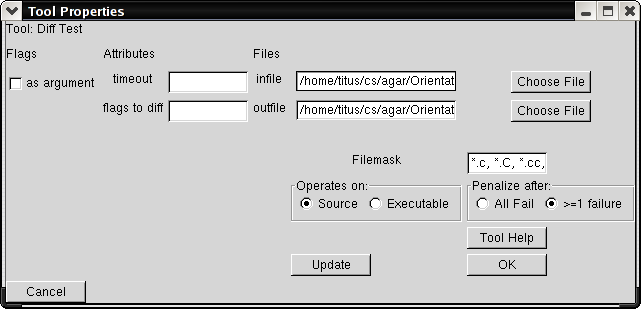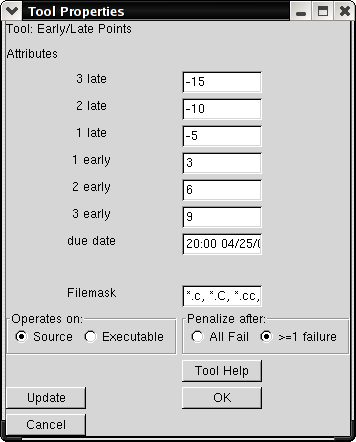



Next: Existing Tools
Up: Tools
Previous: Tools
Contents
Tool Interface
The Tool interface, rather than relying on shared libraries or
intricate IPC like most plug-in
architectures [23] [3], was designed so
as to be easily explained in a couple paragraphs worth of text. No
complicated headers are needed, no language requirements are imposed.
In fact, it is difficult to imagine a simpler extensibility interface
that still runs extensions in a separate process space.
The full requirements for the original tool interface are as follows:
- Each tool must be executable in the standard UNIX syntax for
executables. This implies that the execute bit is set on the file,
and the file is either a binary executable or an interpreted script
with the proper shebang5.2 header line.
- When invoked with the -name option, the tool must print to
standard output a long-form name for itself and then exit with
return code 2.
- When invoked with the -help option, the tool must print to
standard output a usage message with long-form (GNU-style)
arguments. Flags should be specified without an ``='' character.
File arguments should be specified as ``-argument=FILE''. All
other arguments should have an ``='' character and some value other
than ``FILE''.
For example, Figure 5.3 shows the usage message
for the difftest.py tool.
Figure 5.3:
Usage Message for difftest.py
 |
This message will be parsed by Agar, and the configuration dialog
shown in Figure 5.4 will be generated, thus obviating
any need for the tool developer to have any knowledge of GUI
programming, Python, or the wxPython widget set.
Figure 5.4:
A Dynamically Generated Tool Configuration Dialog
|
|
- Each tool operates on a single file per invocation. That
filename will be passed to the tool as the final command line
argument.
- For success, the tool should return an exit code of 0. For
failure, the tool should print relevant error messages to standard
output and return an exit code of 1.
When it was realized that binary grading was insufficient, an addendum
to the Tool interface was made:
- Upon termination, a tool wanting to return a non-binary value
must output as its first line of output the number of points to be
awarded. Only a single decimal place is considered valid (i.e. 10.1
is valid but 10.15 will be truncated).
- Since the tool is being granted total control over the points
awarded, most of the standard tools that utilize this interface also
take point values as arguments. For example, the
pointlate.py tool, which grants increasing bonus points for
submissions up to 3 days early and increasing penalty points for
submissions up to 3 days late, has the interface seen in figure
2.
Figure 5.5:
The Early/Late Points
Configuration, Demonstrating Common Usage for the Advanced
Interface
|
|
- Upon termination, a tool using this ``advanced'' interface
must return exit code 3.
Every tool in Agar uses only this interface, with the exception of the
compile tool. The compile tool (see Figure 5.2.1) has
slightly more complicated behavior in that it needs to be able to
register an executable for a given submission in the event of a
successful compilation. To date, there has been no need for any other
special cases, although for the sake of efficiency the ``Success'' and
``Failure'' tests have been hard-coded into the system rather than
invoking the overhead of spawning a child process that exits with a
given return code.
Figure 5.6:
Compilation Dialog
|
|




Next: Existing Tools
Up: Tools
Previous: Tools
Contents
Titus Winters
2005-02-17



